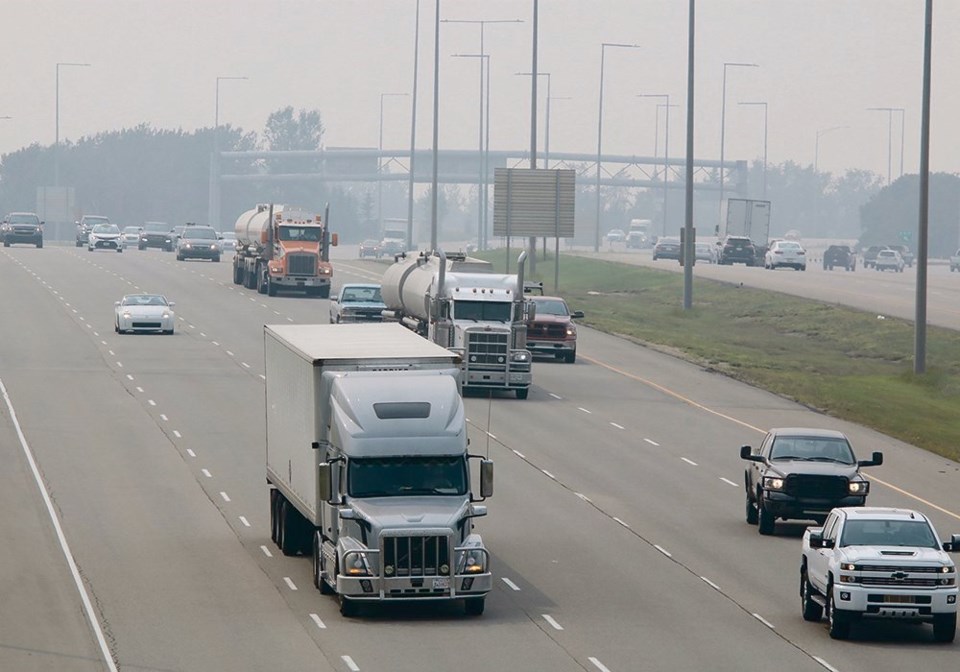It was, probably still could be, or might be in operation right now in one form or another, a three-nation agreement that simply made sense.
At least that’s what I could see of it, although admittedly I was definitely an outsider, but given an opportunity to view a little of the insider details in the role of a reporter a few years ago.
The North American Central Trade Corridor idea conjured up about 20 years ago, involving Mexico, the United States and Canada fit nicely into the North American Free Trade Agreement (NAFTA). It focused activity on moving goods, mainly from central and northern Mexico and the southern U.S. through a defined trade or transportation corridor using the most efficient means possible. It started in north central Mexico, moved through central U.S. states like Texas, Oklahoma, Kansas, Nevada and the Dakotas and made its way to Minot, Estevan, Regina, Saskatoon and eventually Edmonton if desired or required.
The plans unfolded under leadership from all three nations and I was fortunate enough to be invited to sit in on a couple of the gatherings, one of them being in Minot.
If memory serves me, I don’t recall any major discussions regarding tariffs since those matters had been sorted out previously through NAFTA and all parties appeared to be in general agreement with the terms that served all jurisdictions.
There was no one like Donnie Deflector imposing tariff restrictions on anyone, in a yes, no, maybe so fashion every three or four hours. Discussions and deal-making went relatively smoothly and focused on how to carry on business in both directions most effectively.
Highways were discussed and how the corridor featured relatively free-wheeling access for the semis, with no major mountains or rivers or other landscape challenges. Four lanes were preferred, especially by those with wide loads, but they could manage with two lanes since there were good sight lines and reliable weather forecasts.
Talks focused on routes, availability of food, fuel, washrooms and money exchange sites at various centres. They talked about truck by-pass routes, even though the cities they had to navigate around were smaller in scope than in other routes, which was, again, a big advantage in getting products to market quickly and efficiently.
More talks focused on customs and immigration offices and what could be done at various points of entry whether it was trucks, trains or planes using the corridor.
They even talked about autonomous trucks, i.e. one driver, responsible for four to seven units, if the self-driving units ever became a reality.
Strategic global transportation hubs became self-evident and moves were made to construct them in Minot and Regina while other centres made accommodation gestures.
Getting fresh food from Mexico to Saskatoon or Edmonton was quite doable in a matter of a day or two with the right procedures, plans and weather. Rail and air transport issues were not in conflict with the highway model, they just called for a few more people (customs) and plans since the rail system would deviate somewhat from the roads, but not that much.
It was, and maybe still is, a plan with a solid template and potential and would be or could be used currently to deliver goods, south to north and vice-versa.
A current American rail line making its way to a port in Northgate, Sask., and then back again to Minneapolis and Chicago, carrying goods both ways, is one example of this progress.
A recent purchase of an American rail line by a Canadian rail company, that automatically links Mexico to central Canada is another good example of level-headed business people and group thinkers, professors and transportation people getting their heads together to make things easier for all and to add to profit margins.
Now, of course, we have the Deflector involved in the trade world and that is putting a whole new glob-like mess on this tri-country plan. He likes things messy. The more chaos the better it is in his world. Tariffs do the trick until the next shiny new project comes to mind, like suing universities for teaching, law firms for protecting the law and media for delivering news and opinions. Cryptocurrency and memes might work, let’s make them official. And that’s just a tiny sample of this self-inflicted chaos.
There may be an endless stream of confusion for a while, at least until our friends to the south can get the act together and straighten out the system that others put together so effectively a few years ago.
The trade corridor advantages are still there, as long as they are allowed to work.
I know I enjoyed my brief encounters with those people whose minds were focused on plans to move forward in the world of business, transportation and unity.
I’m hoping that spirit returns sooner rather than later.
Leave the fighting for the boxing and wrestling rings or the NHL ice surfaces. That is where it belongs, as entertainment, not as a way of doing international business. Negotiation, listening and understanding issues might be the preferred options perhaps?




